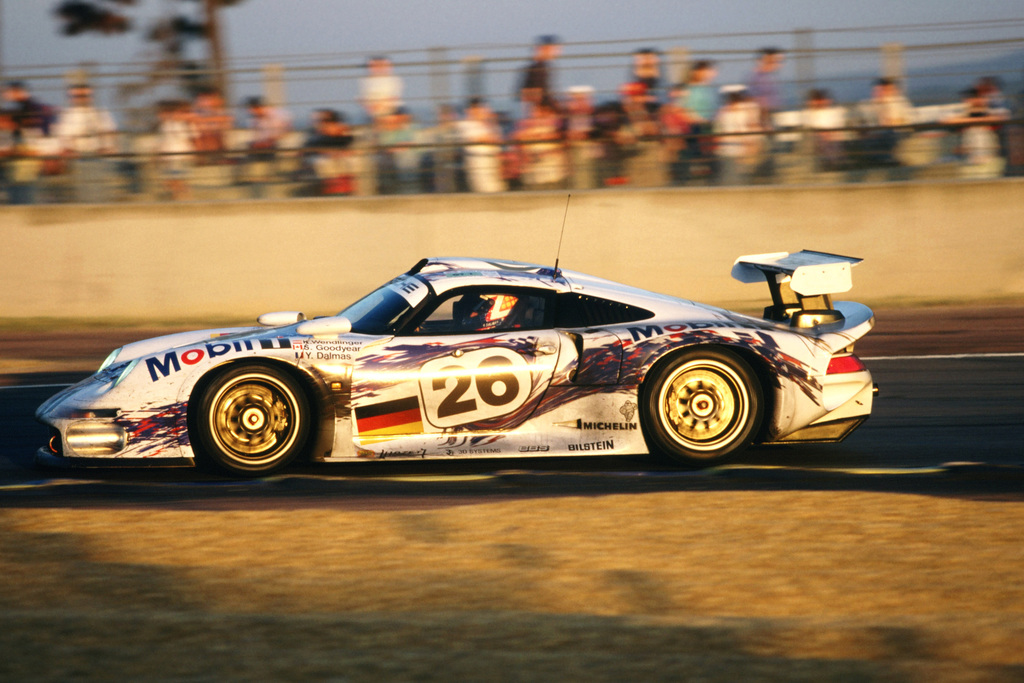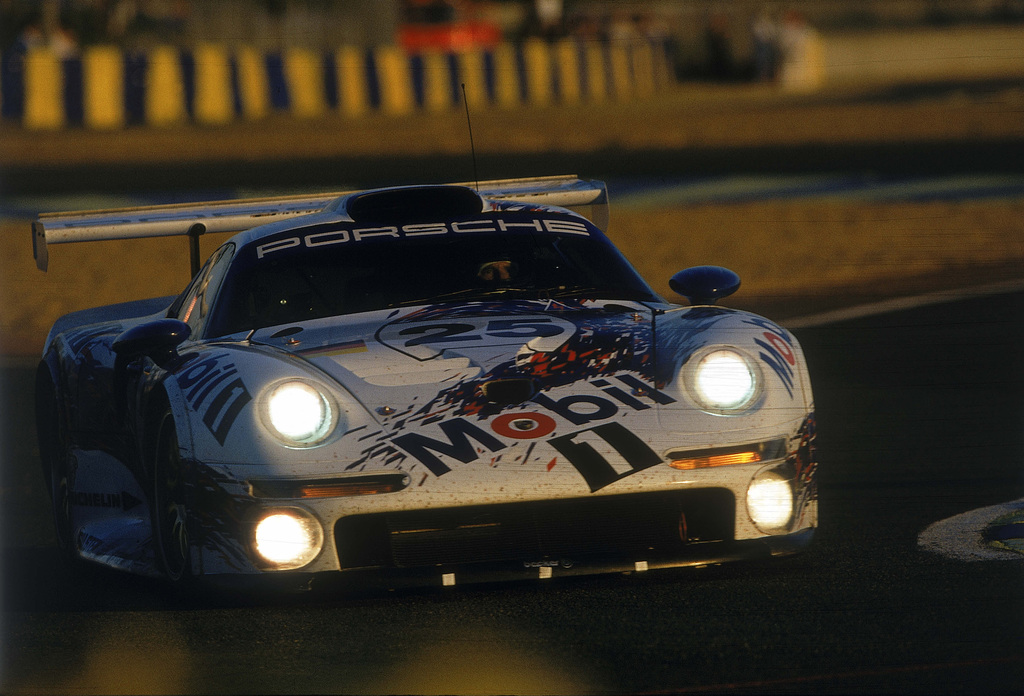1996 Porsche 911 GT1 – Ultimate Guide
Since the dominant years of the Porsche 956 and 962, Porsche had not fielded a Works racing team. Instead, it focused on supporting Porsche privateer efforts, letting customer teams push for the glory. In the early 1990s there were two GT classes; GT1 for heavily modified production cars and GT2 for relatively stock racers. Both classes required a production minimum of 25 examples per annum.
While the McLaren F1, Ferrari F40 and Jaguar XJ220 competed in the GT1 class, Porsche had initially focused its efforts on the GT2 class. The 993 was a good platform and it was pretty easy to adapt for serious racing. In 1995 a number of the GT2 Porsches were modified in an attempt to promote them to the GT1 class but they were nowhere near the pace of the top dogs in GT1. When the McLaren F1 won Le Mans, Porsche decided that a 911-based GT1 car was the answer to winning the top prize in the top category.
Porsche found a loophole in the rules and entered a purpose-built race car. So, unlike its competitors, Porsche decided to design a racing car first and then adopt it for road use to meet the homologation requirements. It deliberately styled the car’s front end with 911’s headlights (from the 993), and then called it 911 GT1 to fool the governing body. To satisfy homologation requirements, it converted the race car back to a handful of road cars, sold them to enthusiastic customers. This became the rarest Porsche road car of all, if you can call it a “road car”.
The GT1 did share some mechanical parts with the production 911. Its front chassis structure was claimed to be taken from the contemporary 993 GT2. This enabled the cockpit to feature the same dashboard and switchgears as the series production model. However, the similarities ended there. The rest of the car was virtually all new.
One of the biggest problems of the 993 GT2 was the location of the engine that did not permit the use of Venturis, which helped with downforce. Designers decided to rotate the six cylinder engine around, making the GT1 the first mid-engined 911. The 3164 cc twin-turbo 24-valve flat-six was derived from the unit powering 962 (in fact, the whole rear chassis structure was also adapted from that legendary endurance race car). On the race car, it developed 600 horsepower. This was detuned to 544 hp and 443 ft lbs of torque for road use.
As the GT1 weighed only 1150 kg, performance was quite spectacular: 0-60 and 100 mph were possible in 3.8 and 7.2 seconds respectively, while top speed was 205 mph. There were faster rivals though – McLaren F1 was good for 3.2, 6.3 and 240 mph respectively, and there were a few other supercars topping more than 210 mph. The GT1’s downforce-oriented shape limited its ultimate speed on the straights of Autobahn.
The cockpit was reinforced with a roll cage, whose extensions to the sills blocked part of the door apertures and made access difficult. Outside, the lightweight Kevlar and carbon-fiber body shell featured massive aero kits to generate the huge downforce that a race car needed.
While the engineers tried to carry over as much as possible from the regular 911 to save cost, most of the mechanicals had to be created from scratch. The original McPherson struts fitted at the front did not offer enough room for adjustment and were replaced by a double wishbone setup. The rear end was completely new and as such required a custom made suspension, consisting of dual wishbones and an advanced push-rod actuated spring/damper setup. Installed the wrong way around, the gearbox also needed attention to prevent the car from having one forward and six reverse speeds. Most of the road car’s dashboard and electrical systems were carried over.
The first 993 GT1 racing car was completed early in 1996 and hit the track in March that year. The production of the virtually identical road cars was postponed to the end of the year; the new racing car was in high demand with the company’s many privateers. In the first half of the season, the GT1 only saw testing action and it was not until the 24 Hours of Le Mans that the new racer first saw competition. Entered by the Works, the two GT1s finished first and second in class, and second and third only to the Porsche powered TWR WSC95 prototype. Porsche completed the successful debut season of the 993 GT1 by taking victories in the final three rounds of the BPR championship.
While the early prototypes built for the 1996 homologation featured the round headlamps of 993, within a few months, Porsche modified it to the GT1 Evo for 1997. Now it featured 996 headlamps and a reshaped body shell that was more aerodynamic efficient yet more stylish – something necessary to sell the road cars. Most of the road cars were finished in this form.
In its debut year in 1996, the GT1 won a few races, including the GT1 class of Le Mans. Next year, the FIA GT championship was dominated by McLaren F1 GTR initially and then Mercedes CLK-GTR, which was a purpose-built race car like Porsche. Lacking the resources of Mercedes, the Porsche struggled to keep up with competition. The 1998 version of GT1 was essentially an all-new race car, with carbon-fiber chassis and even more race-oriented aerodynamics.














